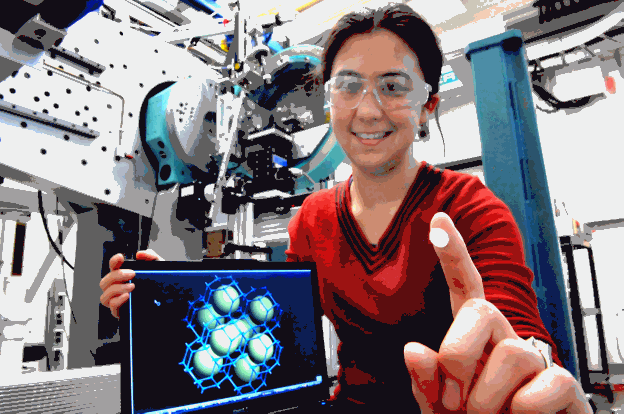Karena Chapman, of the Advanced Photon Source (APS) X-ray Science Division (XSD) at Argonne National Laboratory, won the 2011 Oxford Cryosystems Poster Prize for “11-ID-B, a Dedicated Instrument for X-ray Pair Distribution Function Measurements.” Oxford Cryosystems gives this cash prize to the best poster describing work in low-temperature crystallography.
Chapman’s poster reported her work with Kevin Beyer and Peter Chupas (also XSD) to optimize the instrument at APS. They improved data quality, reduced data collection times, and facilitated a whole range of sample environments for in situ studies under non-ambient conditions.
Now studies varying temperature, pressure, and chemical environment are routine, and users collect hundreds or even thousands of individual pair-distribution functions per day.
The Advanced Photon Source at Argonne National Laboratory is one of five national synchrotron radiation light sources supported by the U.S. Department of Energy’s Office of Science to carry out applied and basic research to understand, predict, and ultimately control matter and energy at the electronic, atomic, and molecular levels, provide the foundations for new energy technologies, and support DOE missions in energy, environment, and national security. To learn more about the Office of Science x-ray user facilities, visit http://science.energy.gov/user-facilities/basic-energy-sciences/.
Argonne National Laboratory seeks solutions to pressing national problems in science and technology. The nation's first national laboratory, Argonne conducts leading-edge basic and applied scientific research in virtually every scientific discipline. Argonne researchers work closely with researchers from hundreds of companies, universities, and federal, state and municipal agencies to help them solve their specific problems, advance America's scientific leadership and prepare the nation for a better future. With employees from more than 60 nations, Argonne is managed by UChicago Argonne, LLC for the U.S. Department of Energy's Office of Science.

